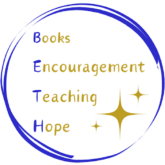This was first posted on elizabethannewrites on May 19, 2011.
When Julie Andrews’ Collection of Poems, Songs and Lullabies was released, I told my mother about it over the phone, and mentioned that there was a CD of Julie reading some of the poems. (Note: Emma reads some of the poems as well.) I remember Mum asking, “Does she know how to read poetry?”
Reading poetry well was of great importance to my mother. Mum’s mother used to recite poetry in festivals, and did very well. Mum had learned from her to love poetry, the music in poetry, and to love hearing it read well. Mum passed this down to me.
I assure you that Julie does, indeed, know how to read poetry. Mum would thoroughly approve of the way Julie uses phrasing and expression to bring out the meaning of a poem. I believe Julie first learned this skill from her dad, who was always reciting poetry, just as my mother learned it from her mother, and I learned it from my mum. However, even if you didn’t learn this skill from your earliest childhood, you can still learn it —
Reading poetry is an art, but it is an accessible one. It just takes a little thought — and the same thought process carries through to reading picture books with rhyming text. It’s all too easy to slip into a sing-song rhythm when reading poetry, especially simple poetry such as the text of a picture book, but it is not necessary, nor does it serve the text or the listener well, and it is so easily avoided.
It isn’t necessary to dramatically declaim the poem or rhyme, that would be going too far the other way. Simply slow down, think about the meaning of the words, the sound of the words, don’t overemphasize either the rhythm or the rhyme — well written poetry will take care of that for you. Your job in reading the text is to bring it to life, just as it is when reading a prose — non-rhyming — text. If you’re not accustomed to reading poetry out loud, it might help to practice a bit.
Take a picture book such as The Pout-Pout Fish in the Big-Big Dark by Deborah Diesen, with illustrations by Dan Hanna, and try a bit of the text in the all-too-familiar sing-song rhythm. Notice the way the words become almost meaningless, almost indistinguishable (experiment with a friend — have the other person stand at a distance and see if they can get the meaning of the words when you’re reading da-DUM-da-DUM-da-DUM-da-DUM, da-DUM-da-DUM-da-DUM. Have them read to you in the same way. Now go back over the same portion of text, reading it in a normal speech cadence. Don’t stop at the end of every line, be guided by the punctuation and the sense of the words. If there’s no comma, continue the sentence as if it wasn’t broken into the traditional lines of a poem. The rhythm and rhyme will follow you, you don’t need to try to make them obvious.
Children love to feel the rhythm of a poem, even to dance the rhythm of a poem, and they enjoy the way rhymes show off words that sound the same. This experience can be enhanced for all by a reading that is sensitive to the text and its meaning. As with singing which is about telling a story through the lyric gently enhanced by the melodic line, reading a rhyming-text picture book is all about telling the story through the words which are just gently enhanced by the rhythm and the rhyme.
A caveat about rhyming text — it is relatively easy to put together a sing-song rhyme. It is much more difficult to write rhyming text that serves the story and enhances the experience for the reader. For this reason, many publishers shy away from rhyming text, despite the fact that children, especially very small children, respond readily to rhythm. I’d suggest reading through a rhyming book prior to buying it or even to borrowing it from the library, to ensure that you’re giving the child the best experience possible (this is, of course, true of any book). In my next post, I’ll suggest a few rhyming-text picture books that I think are accessible in terms of read-aloud for both child and reader, and in which the poetry serves the meaning of the words, and isn’t simply rhyming for rhyming’s sake.
There are many possibilities for finding assistance in learning to read poetry — just google “reading poetry aloud” to find a few. But take a listen to them before settling on any one source to guide you. I found some that looked great until I listened to their audio, and found that their way of reading didn’t sit well with me at all!
The best advice is just to try it. Find a collection of poems such as the Julie Andrews Collection or a rhyming picture book such as The Pout-Pout Fish in the Big-Big Dark, and just try reading the poems, or the text, with an eye and an ear for enjoyment and meaning. You just might surprise yourself!
P.S. After Mum listened to part of the CD of Julie reading poetry, she concluded that yes indeed, Julie knows how to read poetry well — so listen to that CD, follow along in the book, and hear how it’s done!

Super post on rhyme, Beth. I look forward to reading those two books.
Thanks, Catherine!
I should get the CD! 🙂
I think you’d really enjoy it, Erik!